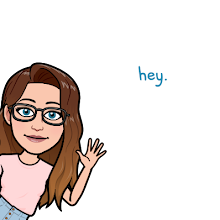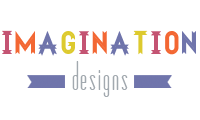Go Ask Alice
by Anonymous (Beatrice Sparks)
Bibliography:
Sparks, Beatrice. Go Ask Alice. New York: Simon Pulse, 2006. Print.
Summary: Go Ask Alice is a diary-style novel that gives us an inside view as our protagonist (one can assume is Alice) deals with common pressures of being a teenage girl in high school. It begins with a journal entry about a boy she likes, Roger, who does not treat her right. Then, Alice is thrilled to learn that her family is relocating for her father's job. She is sure this is just what she needs to reinvent herself, but after moving she still remains lonely. When summer arrives and her one friend has to go away to camp, she decides to spend the time back with her grandparents. It is during this point that Alice gets caught up with a group of people who are into drugs, and her diary and journey truly begin as she tries to crawl her way back out of an almost hopeless situation.
Critical Analysis:
"I'm not really sure which parts of myself are real and which parts are things I've gotten from books." -Go Ask Alice
For starters, Go Ask Alice does cover a concept and issue that needs to be discussed with adolescents. This is an age where they will feel pressured to do many things, and literature can help them to make decisions when put in these situations, especially if those novels are not preaching at them. It is interesting that this was supposedly a real diary with the names and details changed for safety because I do not feel that this was a real teenage girl at all. While it has been some time since I was in high school, and I do not have children, I do teach middle school aged students, and I believe I have fairly good insight into what their writing may sound like. This novel seemed artificial, as an adult was trying very hard to sound like a teenage, and just did not quite achieve what they were hoping to accomplish. The writing was very immature, to the point of frustrating at times, and I found it a bit difficult to continue reading on more than one occasion. This is not a good characteristic to have with YA texts, when it is already a struggle to grab and keep their attention.
Despite the negatives of the novel, it does have a good overall theme, even if it takes a little while to get there. Peer pressure is something that everyone can relate to, and our protagonist makes the common mistake of falling in with the wrong crowd, something that our readers can certainly relate to. There were many interesting times when we got a look into Alice's mind, and saw that she realized what she was doing was wrong, but then was not able to change it on her own. However, often these things were very dramatic very fast, and it just did not seem very realistic. While this book has received a lot of praise throughout the years, I struggled a bit to see the complete merit in it. As far as being appropriate for young adults, I can certainly understand why some parents might be concerned about their child reading the novel. It is certainly for upper teens in high school, and not before then.
"I'm not really sure which parts of myself are real and which parts are things I've gotten from books." -Go Ask Alice
For starters, Go Ask Alice does cover a concept and issue that needs to be discussed with adolescents. This is an age where they will feel pressured to do many things, and literature can help them to make decisions when put in these situations, especially if those novels are not preaching at them. It is interesting that this was supposedly a real diary with the names and details changed for safety because I do not feel that this was a real teenage girl at all. While it has been some time since I was in high school, and I do not have children, I do teach middle school aged students, and I believe I have fairly good insight into what their writing may sound like. This novel seemed artificial, as an adult was trying very hard to sound like a teenage, and just did not quite achieve what they were hoping to accomplish. The writing was very immature, to the point of frustrating at times, and I found it a bit difficult to continue reading on more than one occasion. This is not a good characteristic to have with YA texts, when it is already a struggle to grab and keep their attention.
Despite the negatives of the novel, it does have a good overall theme, even if it takes a little while to get there. Peer pressure is something that everyone can relate to, and our protagonist makes the common mistake of falling in with the wrong crowd, something that our readers can certainly relate to. There were many interesting times when we got a look into Alice's mind, and saw that she realized what she was doing was wrong, but then was not able to change it on her own. However, often these things were very dramatic very fast, and it just did not seem very realistic. While this book has received a lot of praise throughout the years, I struggled a bit to see the complete merit in it. As far as being appropriate for young adults, I can certainly understand why some parents might be concerned about their child reading the novel. It is certainly for upper teens in high school, and not before then.
Creative Activity: One of the best things about this novel is that it is written as a diary instead of a regular narrative format. Because of this, it could be an excellent model piece for a writing classroom. Of course, the teacher/librarian would need to make sure that the book/excerpt used is appropriate for the targeted grade level. There could be a discussion about how Alice writes in her diary to help get her thoughts out and deal with conflict, and then students can write their own series of journal entries in which they discuss a conflict that they have gone through, and what happened because of that conflict.
Related Resources:
1. The first resource is actually a set of resources, as any novel by Ellen Hopkins could be used as a companion novel. Hopkins also writes about teens who are struggling through difficult situations and peer pressures of many kinds, but she seems to capture the view of adolescents much more successfully.
2. Lucy in the Sky or Jay's Journal are also novels by Anonymous that are written in the same way as Go Ask Alice, and therefore excerpts could be used together to look at similarities and differences between the characters.
1. The first resource is actually a set of resources, as any novel by Ellen Hopkins could be used as a companion novel. Hopkins also writes about teens who are struggling through difficult situations and peer pressures of many kinds, but she seems to capture the view of adolescents much more successfully.
2. Lucy in the Sky or Jay's Journal are also novels by Anonymous that are written in the same way as Go Ask Alice, and therefore excerpts could be used together to look at similarities and differences between the characters.
Published Review:
The New York Times. "Just Say 'Uh-Oh,'" 1998. Web. 27 June 2016. Retrieved from https://www.nytimes.com/books/98/11/15/reviews/981115.15oppenht.html
The New York Times. "Just Say 'Uh-Oh,'" 1998. Web. 27 June 2016. Retrieved from https://www.nytimes.com/books/98/11/15/reviews/981115.15oppenht.html

















يسعدنا و أن نقدم لكم شركة الحورس لتركيب طارد الحمام والطيور بالرياض شركة ممتازة جداً و ذات خبرات فائقة فى
ReplyDeleteمكافحة الطيور و الحمام و عمل و تنفيذ تلك الطوارد المعدنية على أمثل وجه فهى تعمل على طرد الطيور و هربها ليس
شركة مكافحة حمام بالرياض
قتلها لان معظمها تكون للزينة و التربية فتواصلوا معاها لكى تخلصك من جميع الروائح والفضلات التى تتركها عند
وجودها على المبنى فوداعاً لتواجد الطيور على النوافذ والاسوار الخارجية للمنزل .